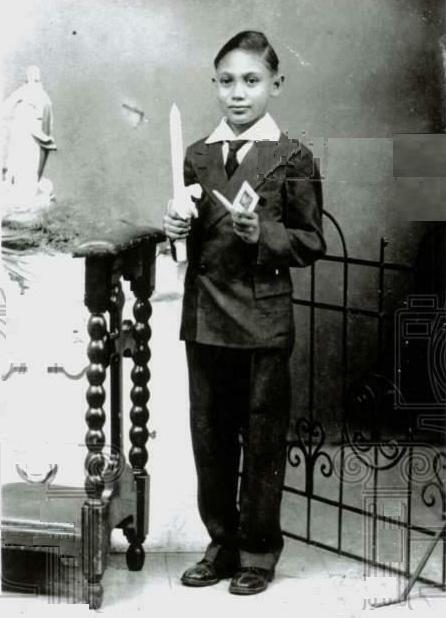
Figure 1.--This is the earlest known photograph of Manuel Noriega. Although raised by his poor washerwoman godmother, she akways saw to it vthst he was neatly dressed. Here at age 11 years he is wearing his First Communuin suit (December 1944) |

|
Manuel Antonio Noriega was born to an unmarried washermonany of Colombian mixed race extraction in Panama City (1934?). His parents were unmarried. After his mother died, he was raised by his Godmother in the slum area of Terraplén. He was described as an oddly bookish child, always neatly dressed by his Godmother. Hewas active in the Socialist Party youth movement youth. He reported on its members for money to U.S. inteligence awents. He was raised by foster parents. He atended a prestigious high schools in Panama. He earned a scholarship to the Chorrillos Military School in Lima and at the School of the Americas. He was was commissioned a sub-lieutenant in Panama's voluntary National Guard (1962). He rapidly advanced through the ranks, primarily by deveioping a close relationship Gen. Omar Torrijos. Torrijos bedcame Panama's de facto leader after a coup (1968). Torrijos relied on him as his intelligence chief. Nioriega closely monitored Panamanians, especially Torrijos' political opponents. As intelligence chief, Noriega developed close ties with American intelligence agencies. Panama was of special importance to America because of the strategic importance of the Canal. Torrijos died in a still unexpalined plane crash (1981). Some believe it was a polituicalmassaination, but an ccident is certainly possible. Noriega became the head of the Defense Forces (1983). This made him like Torrijos before him, Panama's de facto leader. He renmamed the National Guard the Defense Forces. Noriega became a valued CIA asset and was paid millions of dollars for assistance to the U.S. throughout Latin America. He informally acted as liaison to Cuban dictator Fidel Castro. Noriega aided American authorities seize drugs and track money laundering through Panamanian banks. He provided intelligence on guerrilla and terrorist operatios. The relationship with the United States gradually deteriorated. Pananamanians began denonstraing for a democratic government. Torrijos had seized opower in a coup, but he was a populsr figure. Noiriega in contrast ruiled through fear and brute firce. An important political opponent was murdered soon after Noriega seized power, presumably upon Noriega's orders (1985). Dr. Hugo Spadafora was a charismatic Noriega opponent who had been an official in the Torrijos government. Noriega began taking advantage of his position to benefit financially from cooperating with Narco Traficantes who offered him substabtially more money than he was receiving from the Americans. He defeated several attempted coups. He had coup leaders summarily shot. He was ressted for drug traficking after an American invasion (1989). As a result, democracy was restored and Panama is now a prosperous country.
Navigate the Boys' Historical Clothing Biography pages:
[Return to Main biography page]
[Biographies A-F]
[Biographies G-L]
[Biographies M-R]
[Biographies S-Z]
Navigate the Boys' Historical Clothing Web Site:
[Return to the Main Panamanian history page]
[Introduction]
[Activities]
[Biographies]
[Chronology]
[Clothing styles]
[Countries]
[Bibliographies]
[Contributions]
[FAQs]
[Glossaries]
[Images]
[Links]
[Registration]
[Tools]
[Boys' Clothing Home]
